Read this article to learn how to delete partition using DiskPart, Disk Management, and Windows PowerShell. However, if you want to recover deleted data and partitions in the future, try MiniTool software.
In the digital age, a hard drive partition is like a map in the file world. It divides the storage space into different areas so that the operating system and users can manage data more efficiently.
However, as usage needs change, some partitions may become redundant, unused, or even hinder optimal system performance. This is when deleting partitions becomes necessary.
Whether it’s reallocating disk space, installing a new operating system, or troubleshooting disk errors, knowing how to safely and effectively delete a partition is a fundamental skill every computer user should possess.
What Should You Know About Partition Deletion
What do you know about partition deletion? No idea? It doesn’t matter. I will take you to learn more about it.
What Is Partition
A physical hard drive is always divided into several logical areas, each called a partition. These areas are typically represented in the operating system by drive letters.
Each partition can be independently formatted, installed with an operating system, and stored with data. This facilitates categorized management and flexible use.
Partition types include primary partitions, extended partitions, and logical partitions. There can be up to four primary partitions, and extended partitions can be further divided into multiple logical partitions. This allows for multiple primary partitions.
When Do You Need to Delete Partition
In many cases, deleting a partition becomes a necessary operation. Here are some detailed scenarios.
1. Rearrange disk space
For example, if your C drive is running low on space, you can extend it using unallocated space.
In Disk Management, a partition can only be extended if there is unallocated space immediately to its right. If there is an adjacent partition that you no longer need, you can delete it to create unallocated space and then extend C into that space.
2. Install or reinstall an operating system
If you’re installing a new version of Windows, you’ll usually need to erase the old system partition. Sometimes, for a clean install, all partitions on the entire disk are deleted.
3. Repair disk errors or partition corruption
Some partitions may become inaccessible due to file system corruption, formatting failures, virus attacks, or power outages. Deleting and then recreating the partitions can help restore the disk to normal use.
4. Clear a disk for other uses
For example, if you’re using a hard drive for NAS, virtual machines, external storage, or encrypted storage, you’ll need to delete the existing partitions first.
If you’re converting an old computer’s hard drive to a portable hard drive, you’ll also need to erase the existing structure.
5. Remove hidden or recovery partitions
Brand-name computers often come with OEM recovery partitions that occupy space but are rarely used. Deleting recovery partitions can free up several GB of space, but proceed with caution, as this may affect system recovery capabilities.
Before You Do: Check Out These Tips
Before deleting a partition, do as following:
- Back up files. Deleting a partition is irreversible and permanently deletes all data within it. If the files are important, back them up first.
- Confirm the partition type. Exercise caution when deleting recovery partitions, as they are required for system recovery options.
- Check if the partition is in use. Make sure no programs or services are accessing the partition. If it’s a system partition or contains active files, do not delete it directly.
- Check the disk structure. Check if there are other partitions on the disk that can be used to store data or install the operating system. Deleting a partition will cause the space to become “Unallocated” and require reallocation or formatting before use.
How to Delete Partition on Windows
Whether you want to remove a normal partition or delete the recovery partition, the following methods can help you achieve it.
Way 1: Delete Partition with Disk Management
Deleting partitions using the Windows Disk Management tool is a safe, intuitive, and native method for adjusting disk space, suitable for most users.
It provides a graphical interface that clearly displays the disk structure, preventing errors, and eliminates the need for installing third-party software.
Whether you’re cleaning up old partitions, freeing up space, or reallocating disk resources for a new system or data, Disk Management efficiently completes the task.
Step 1: Right-click the Windows button and choose Disk Management.
Step 2: Find and right-click the partition you want to delete and choose Delete Volume.
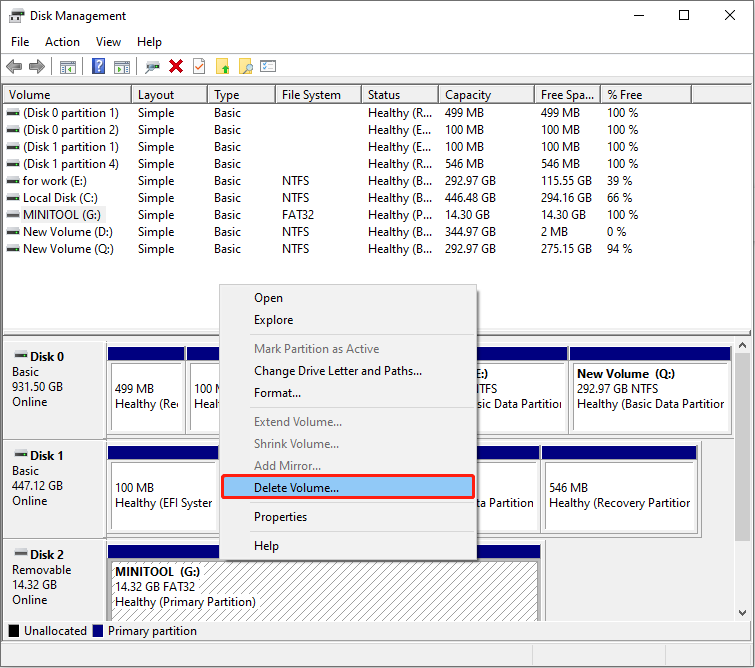
Step 3: In the prompt window, click Yes to perform this operation.
Way 2: Delete Partition via DiskPart
How to use DiskPart to delete partition? This is a more advanced and flexible method, particularly suitable for situations where the graphical interface is inoperable or system limitations exist.
As a built-in command-line tool in Windows, DiskPart can handle hidden and protected partitions, as well as perform partition management tasks in the recovery environment.
About the method of DiskPart delete partition, here are two different options:
Option 1: Delete a partition with the volume command
If you want to delete a normal data disk (such as D:), using the volume command is more intuitive.
Step 1: Type Command Prompt in the Windows search bar, right-click the best match, and choose Run as administrator.
Step 2: Enter diskpart in the prompt window and press Enter.
Step 3: Type the following commands one by one and press Enter after each one:
- list volume
- select volume 8 (replace 8 with the number of the target volume)
- delete volume
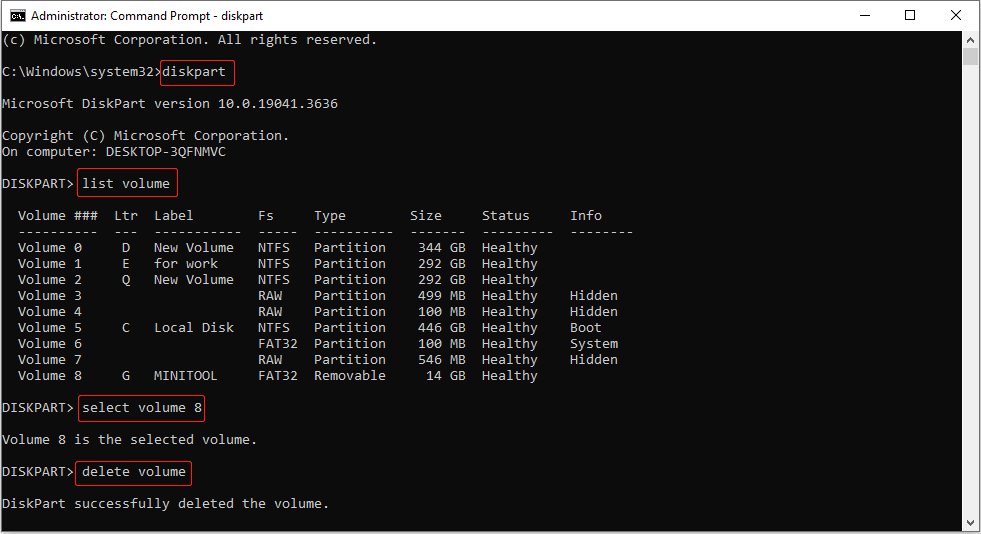
Option 2: Delete a partition with the partition command
If you want to delete a hidden recovery partition or EFI partition, you need to use the partition command.
Step 1: Run Command Prompt as an administrator, type diskpart, and press Enter.
Step 2: Type the following commands sequentially and press Enter after each command:
- list disk
- select disk 2 (Replace 2 with the number of the target disk.)
- list partition
- select partition 1 (Replace 1 with the number of the partition you want to delete)
- delete partition
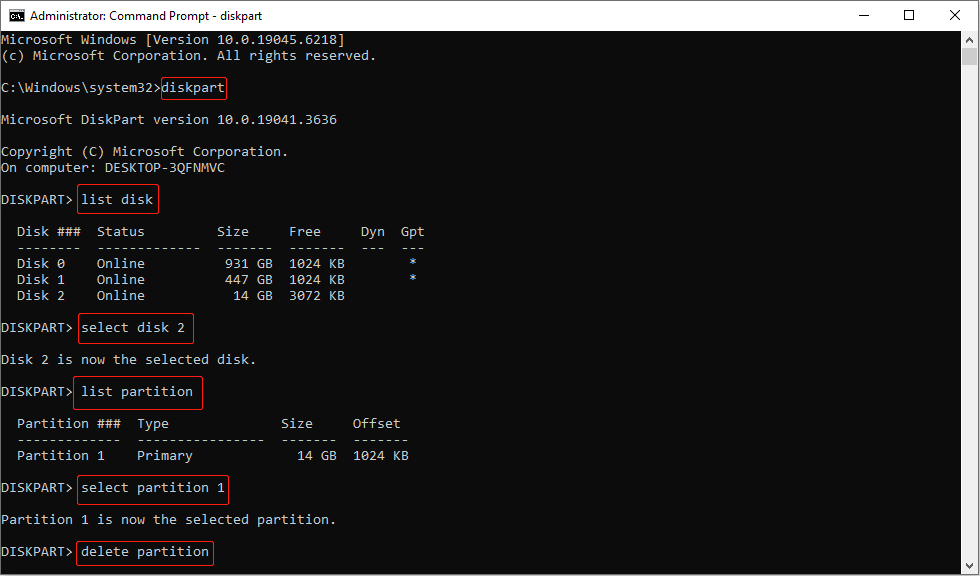
Way 3: Remove a Partition Using PowerShell
Using PowerShell to delete partitions is an automated, efficient, and scriptable method, particularly suitable for scenarios requiring mass operations or remote management.
Compared to graphical tools, PowerShell offers greater control, allowing precise specification of target partitions through commands and integration with other system management tasks.
Step 1: Right-click the Windows button and choose Windows PowerShell (Admin).
Step 2: Now, type Get-Volume and press Enter.
Step 3: Continue typing Remove-Partition -DriveLetter G and hit Enter.
Step 4: Finally, enter Y and hit Enter.

Deleting a partition is just the beginning of disk reconstruction, not the end. After deletion, the original space becomes “unallocated”. This allows you to create new partitions, expand existing ones, or use third-party tools for more complex layout adjustments.
How to Recover Data from a Deleted Partition
If you’re looking to recover deleted partition data, MiniTool Power Data Recovery is a worthwhile option to consider. Its powerful scanning capabilities and wide compatibility make it particularly well-suited for complex data loss scenarios. Here are a few key advantages:
Whether partitions are lost due to accidental deletion, partition table corruption, or formatting, it can identify and scan the data within them. It supports a variety of storage devices, including HDDs, SSDs, USB flash drives, and SD cards.
It’s easy to use, requiring no technical skills. With just a few simple steps and a user-friendly interface, you can recover data quickly. Don’t worry about its security, as the software only reads and scans, never writing to the original data, causing secondary damage.
This free data recovery software supports restoring 1 GB of files for free. Download and install it on your computer. It is recommended to install it on a disk where no data is lost.
MiniTool Power Data Recovery FreeClick to Download100%Clean & Safe
Step 1: Open the data recovery software and scan the lost partition
Launch the MiniTool Power Data Recovery software. When entering the main interface, you will see all the partitions, including existing partitions, deleted partitions, and unallocated space under the Logical Drives tab.
Find the deleted partition you want, move your cursor on the section, and click Scan to scan for data.

Step 2: Wait for the scan process to complete and find the target files
The scan process may take from several minutes to several hours, depending on the disk capacity and the number of files. For the best scanning results, you need to wait patiently for it to complete. When it ends, check all files listed by their file structure under the Path tab.
In addition to the file structure search criteria, there are several other features that can help you quickly locate your target file. Let’s take a look.
- The Type feature automatically classifies scanned files by type, such as pictures, documents, videos, audios, etc. Suitable for situations where you don’t remember the file name but know the file type.
- The Filter feature allows you to filter the results by file type, modification time, file size, and file category. You can set it once to further narrow the scope.
- You can enter keywords or full file names and press Enter to quickly locate target files through the Search feature. It supports fuzzy search and partial matching.
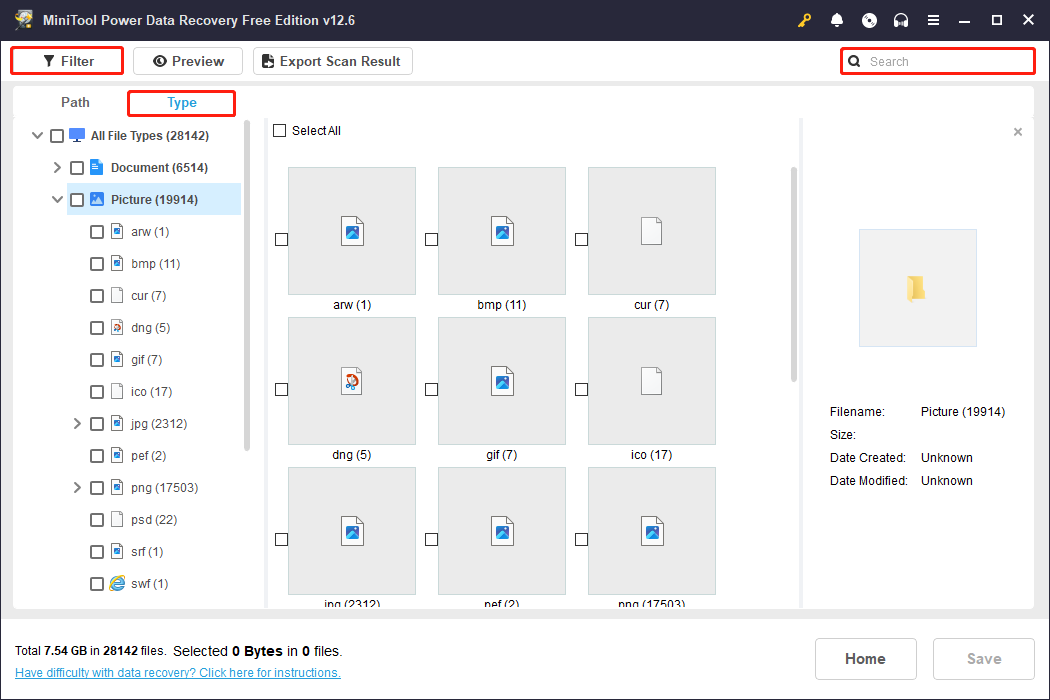
Step 3: Preview the files one by one after finding them
You can preview multiple file types before recovery. This helps you confirm file integrity and increase your recovery success rate.
Just double-click the files one by one, and then the software attempts to open and display the contents of the file.
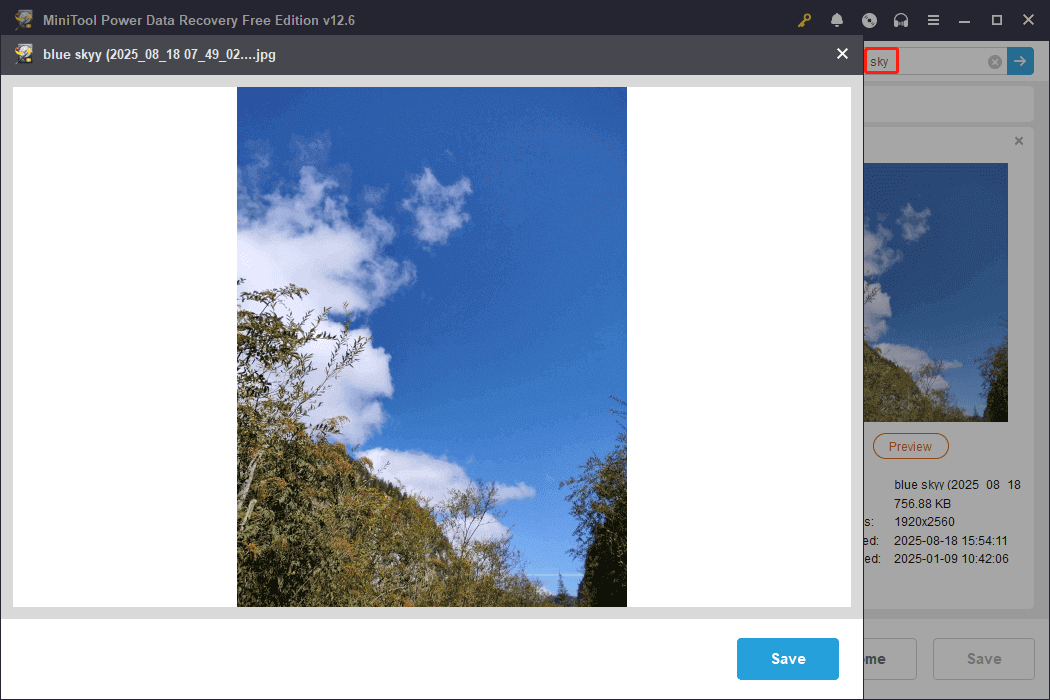
Step 4: Choose a new location for the recovered files and restore them
After confirming the file content, check the boxes for all the needed files and click Save. There is a window prompting you to choose a destination for the recovered files. It is best to select a new and safe place. After selecting one, click OK. The recovery will start.

When you see the Recovery Completed window, go and check if your files are saved to the right place.
Also, you can see the remaining free recovery capacity. When it is used up, upgrade to an advanced edition. With it, you can possess more permissions.
How to Recover Deleted Partitions
If you want to recover partitions, MiniTool Partition Wizard is undoubtedly the best choice. It is particularly good at dealing with partition loss issues.
The software includes a built-in Partition Recovery module that scans the entire drive, identifies deleted, lost, or corrupted partition tables, and attempts to restore the original structure.
And if the partitions haven’t been overwritten, this tool can effectively recover the original partitions and the data.
Step 1: Download and install MiniTool Partition Wizard, and then launch it.
MiniTool Partition Wizard FreeClick to Download100%Clean & Safe
Step 2: Click the Partition Recovery section and Next to continue.

Step 3: Pick the disk that contains your deleted partition and click Next.
Step 4: Select a scanning range according to your needs and click Next.
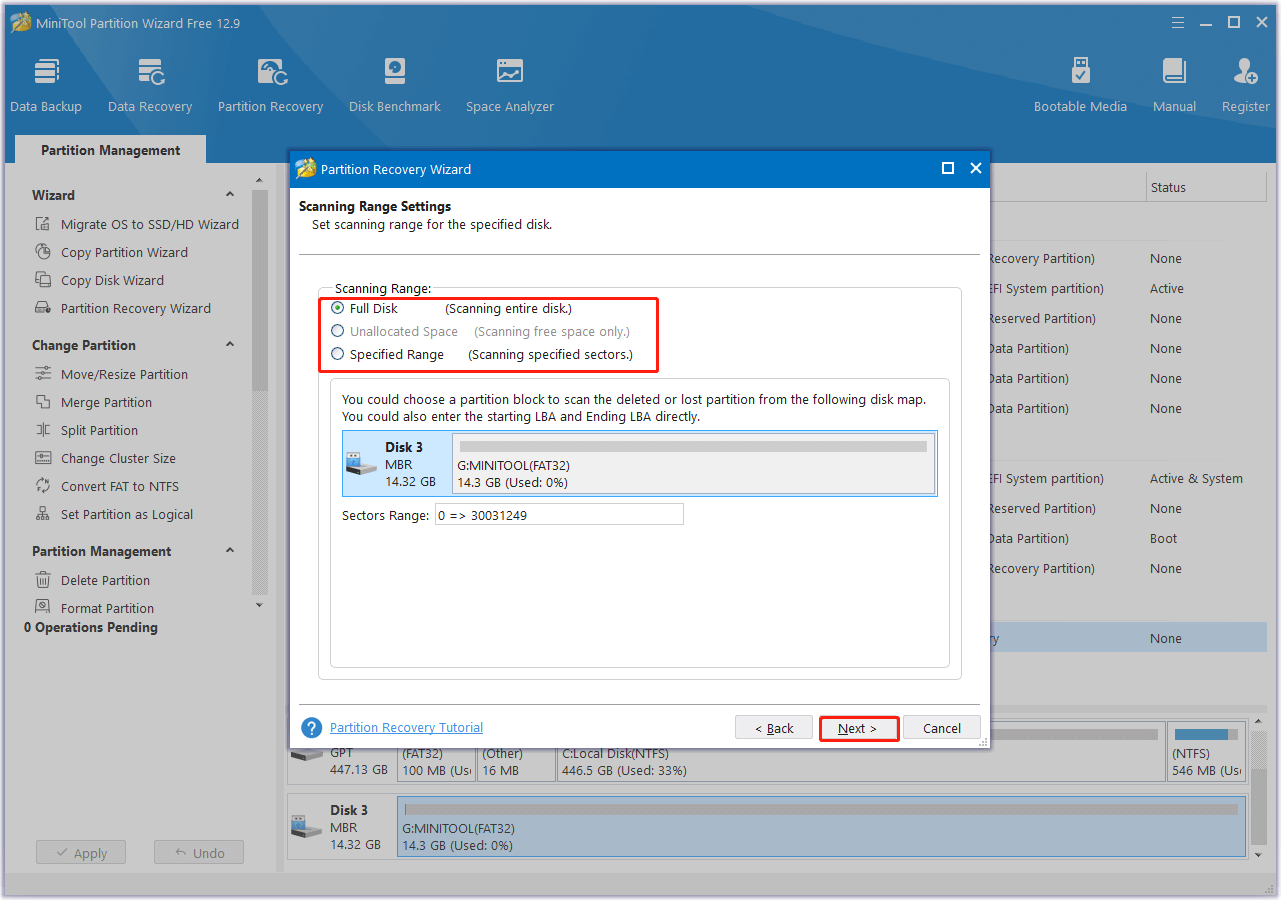
Step 5: Choose a scanning method between Quick Scan and Full Scan, and click Next.
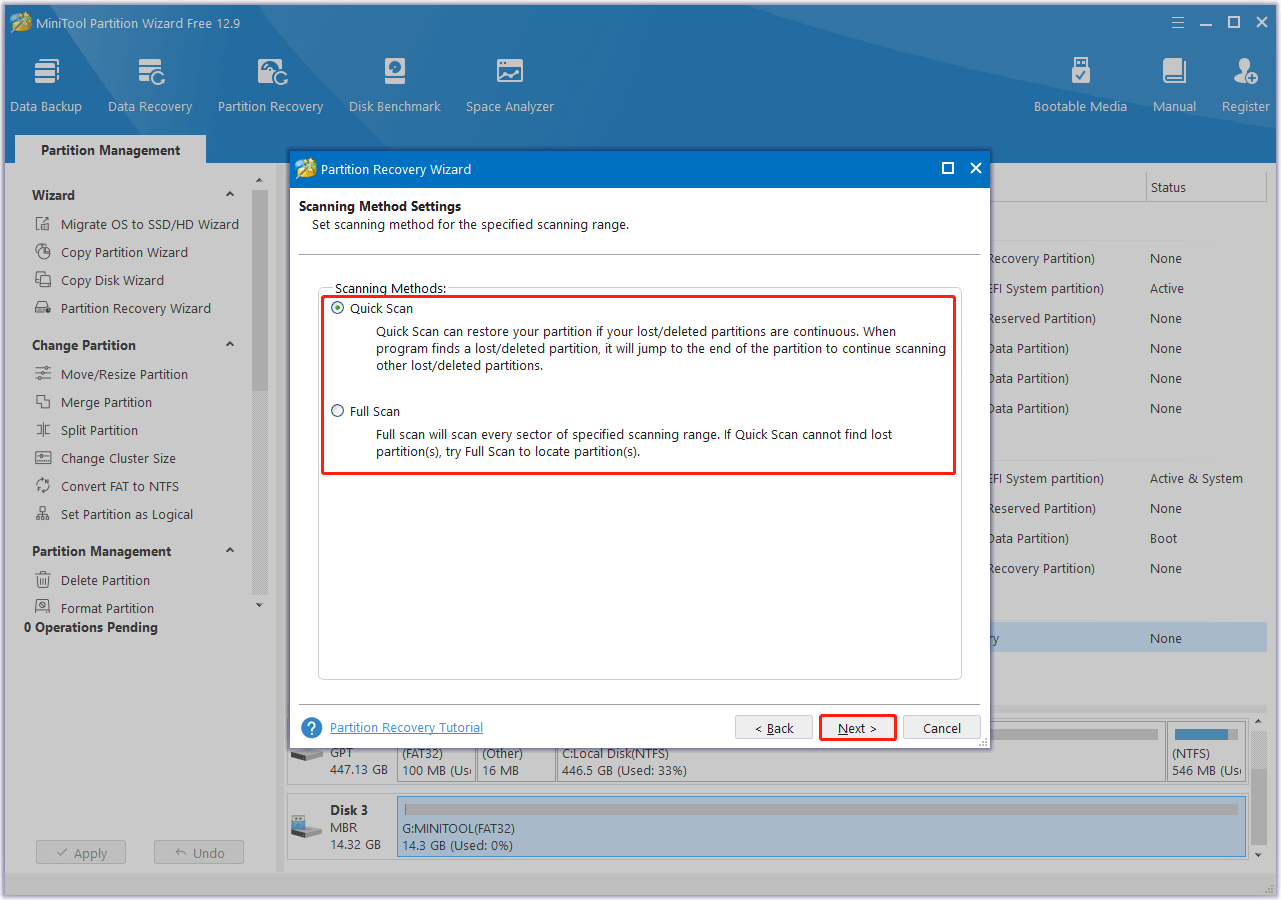
Step 6: When the scan is completed, the found partition will be listed. You can double-click it to check the content.
Step 7: Once confirmed, click Finish. If you are using the free edition, after clicking the Finish button, it will prompt you to unlock premium features. Follow the on-screen instructions to complete the upgrade.
After recovering the deleted partition, assign it a drive letter to resume normal use.
In a Word
How to delete a partition using DiskPart, Disk Management, and Windows PowerShell? I believe you have a better understanding. Take action now!
However, remember to back up important files or make sure the files in it are unwanted before proceeding. If you want to recover deleted data and partitions, try our MiniTool software.
You may have questions about MiniTool products. Contact us through [email protected], and we will do our best to answer them.
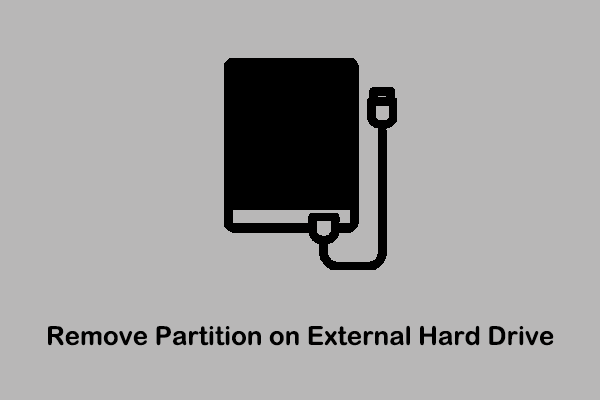
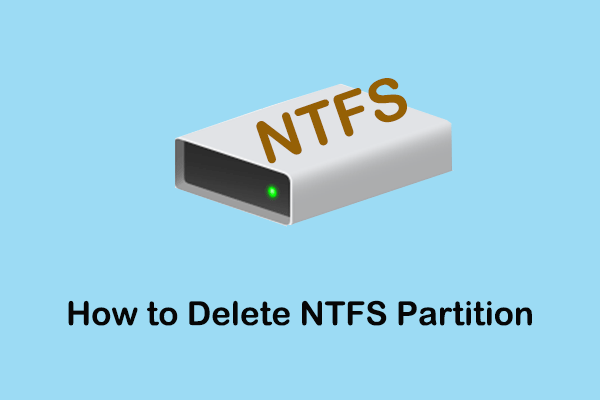
User Comments :